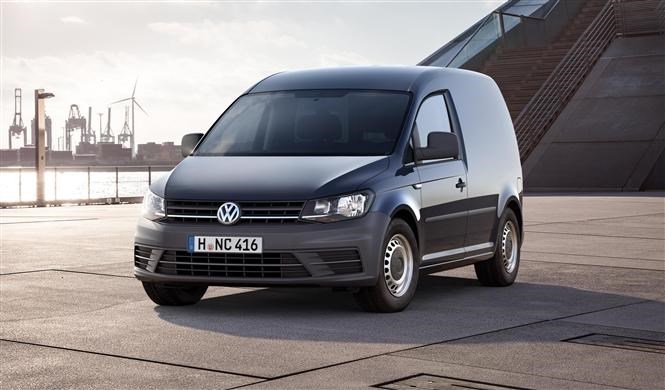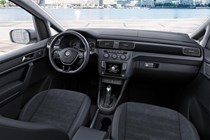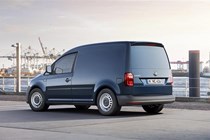The Volkswagen Caddy has gone on to rack up over 1.5 million sales over its relatively short lifetime, and so the highly anticipated unveil of the fourth generation is a big deal for the German manufacturer.
Considering that it been 12 years since the third generation was launched, and the vast improvements in the Ford Transit Connect, Vauxhall Combo and Fiat Doblo, we were expecting huge advancements to be made in the Volkswagen Caddy.
We were, however, left slightly bemused at the transformation. While the interior and safety systems have changed drastically, the chassis and cargo area have hardly been touched, and it even looks fairly similar.
‘New’ face
Although the lights and bumper are completely new, they don’t appear to be much different to the previous generation. The new Volkswagen Caddy does indeed look slightly sharper, but you’d be hard pressed to note any major restyling and, with the exception of the rear lights, very little has changed behind the B-Pillar.
Same loading dimensions
Engineers at the launch told us that the payload will increase, but it won’t reach the one-tonne threshold like the Vauxhall Combo, Fiat Doblo and Ford Transit Connect. Load dimensions remain the same: a 1,552mm load width, 1,244mm load height and a choice of either a 1,781mm or 2,250mm load length.
This corresponds to load volumes of 3.2 and 4.2 cubic metres. The width between the wheel arches remains at 1,170mm, which is too narrow to fit a Euro pallet lengthways.
Same engines
Both the Euro-5 and Euro-6 engines will be available from the outset, with the Euro-6 offering displacements of 1.6-litre (74bhp and 101bhp) and 2-litre (138bhp). So far, Volkswagen has only confirmed the 2-litre diesel for Euro-6, offering power ratings of 74bhp, 101bhp and 148bhp.
A 1-litre petrol unit may also be on the cards. Fuel efficiency of the Euro-6 engines is much improved, and combined with Bluemotion technology offers fuel consumption figures of over 70mpg.
Improved safety
It’s the safety aspect where the Volkswagen Caddy makes the biggest gains, though. The new Caddy features a whole host of safety systems with a special focus on occupant protection and driver aids.
“To achieve this, we have incorporated a large number of driver assistance systems, which are unmatched in the urban delivery van segment”, said Hans-Joachim Rothenpieler, Member of the Board for Technical Development of Volkswagen Commercial Vehicles.
Front Assist is one such example. It’s a clever gadget which we tested in the Volkswagen Passat last year. It incorporates City Emergency Braking and automatically brakes when it senses a collision is imminent – operable up to 19mph.
Multi-collision Brake System is also included as standard. This system continues to brake to apply the brakes after a collision if the driver is unable to, which Volkswagen says will help in the 22 percent of accidents where there is more than one collision.
Adaptive Cruise Control, Light Assist (automatically dipping main beam headlights), Driver Alert (analyses driver fatigue and recommends breaks), Park Assist (automatic parking system) and reversing cameras also join the options list for the first time.
Interior makeover
The new cab follows on with Volkswagen’s ‘smart and functional’ interior theme, and the presentable trims and new generation of infotainment systems underline the new Caddy’s modern look.
As with the previous generation, the steering wheel is reach and rake adjustable, and the three-way adjustable seats mean that passengers of most shapes and sizes can fit in easily. Although we are yet to test the new infotainment properly, we’re told it will feature Bluetooth, as well as USB and aux-in connections.
Summary
As we mentioned, we were quite disappointed with the number of changes made but, as the Volkswagen Caddy continues to fly off the shelves, there’s no need for such a large overhaul. The new Caddy will be launched in Germany at the end of June and UK vehicles will arrive later in the year. UK specifications and pricing will be announced in due course, but it’s expected pricing will start at £17,000 on the road.
Just so you know, we may receive a commission or other compensation from the links on this website - read why you should trust us.








